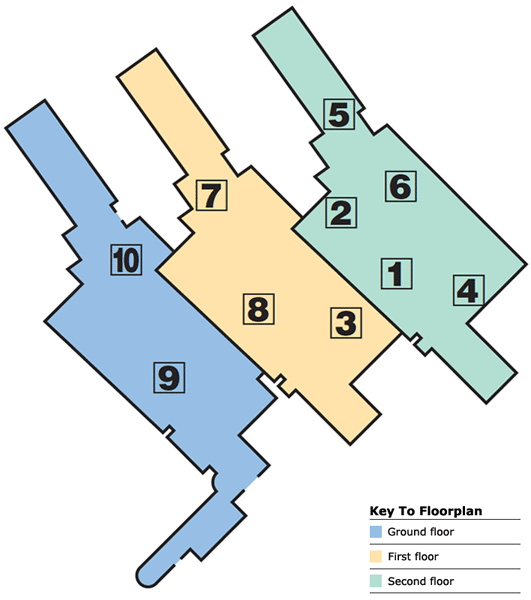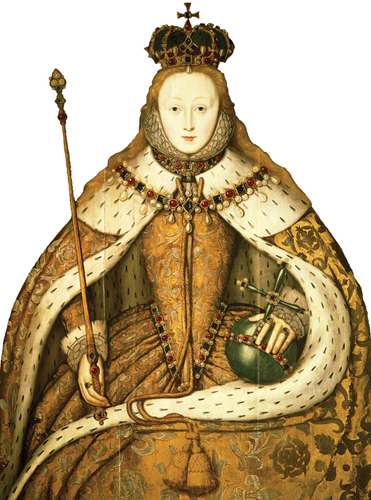This is one of the most unexpectedly pleasing
galleries in London. Unrelated to the neighbouring National Gallery, it
opened in 1856. Well-known names can be put to some not-so-well-known
faces, and there are some fascinating paintings from Tudor times to the
present day. Royalty is depicted from Richard II (1367–1400) to Queen
Elizabeth II, and the collection also holds a 1554 miniature, the oldest
self-portrait in oils in England. The displays are changed regularly so
paintings from the collection are not always on view.
|
The gallery’s three
floors are arranged chronologically. Take the escalator to the second
floor and start with the Tudor and Stuart galleries (1–8). Men and women
of arts, science and industry from the 18th and early 19th century are
in galleries 9 to 20. The first floor has eminent Victorians and early
photographs. The balcony and ground-floor galleries have 20th- and
21st-century works.
|

|
The Portrait Restaurant has great views across Trafalgar Square, down Whitehall to Parliament.
|
|
|
The Gallery bookshop stocks fashion, costume, history and biography titles.
|
|
|
The ground-floor gift shop has good postcards.
|
|
|
Free concerts at 6:30pm on Fridays, and lectures at 7pm on Thursdays.
|
|
Top 10 PortraitsQueen Elizabeth I This
anonymous portrait is one of several of Elizabeth I, who presided over
England’s Renaissance (1533–1603). The Tudor rooms are the most
satisfying in the gallery, and they contain two cases of miniature
paintings, a popular genre of the time.

William Shakespeare This
is the only portrait of Britain’s famous playwright known with
certainty to have been painted during his lifetime (1564–1616). The Brontës Found
in a drawer in 1914, this portrait of the great literary sisters,
Charlotte, Emily and Anne Brontë, from Yorkshire, was painted by their
brother, Branwell. He appears as a faint image behind them. The Whitehall Mural This
cartoon of Henry VII and his son Henry VIII by Hans Holbein (1537) was
drawn for a large mural in the Palace of Whitehall, lost when the palace
burnt down in 1698. George Gordon, 6th Lord Byron This
painting of Lord Byron (1788–1824), by Thomas Phillips, depicts the
poet and champion of liberty in Albanian dress. He died fighting with
Greek insurgents against the Turks. Horatio Nelson This
1799 portrait by Guy Head depicts Nelson after the Battle of the Nile.
Apart from Queen Victoria and the Duke of Wellington, he was painted
more often than any other British figure in history. Alfred Lord Tennyson This
picture of the poet laureate is by one of the pioneers of photography,
Julia Margaret Cameron (1815–79). She was given a camera at the age of
48 and was noted for her memorable portraits of Tennyson, the naturalist
Charles Darwin and the essayist Thomas Carlyle. The Beatles Photographic
portraits took on a new lease of life in the 1960s, when photographers
themselves became stars. Norman Parkinson, who took this picture of the
Beatles, was one of Vogue’s favourite fashion photographers. Germaine Greer The feminist author of The Female Eunuch is brilliantly captured by Portuguese artist Paula Rego, the first artist-in-residence at the National Gallery. Margaret Thatcher Today’s
famous are more likely to sit for a photographer than a painter. This
revealing portrait of the former British prime minister by Helmut Newton
allows you to study her in a way you would never dare in real life.
|